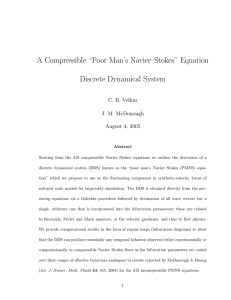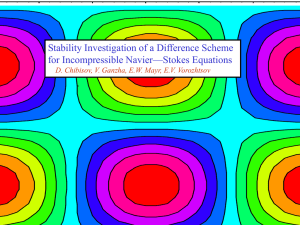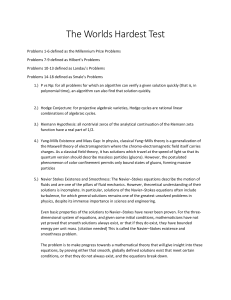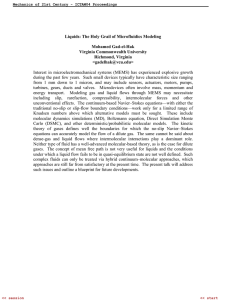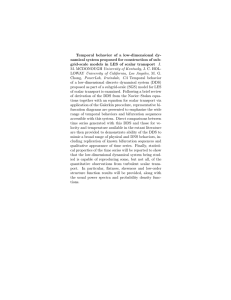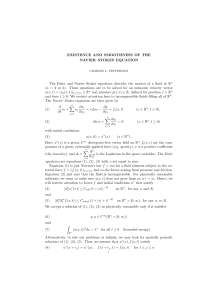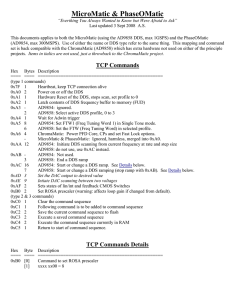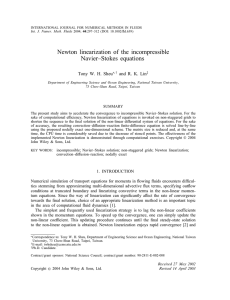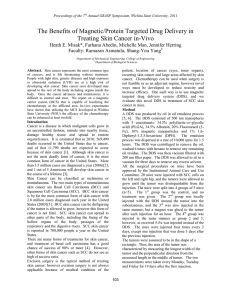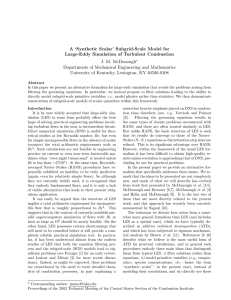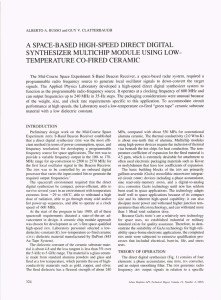Analysis of “Poor Man’s Navier–Stokes” and Thermal Energy Equations for... Number Turbulent Convection
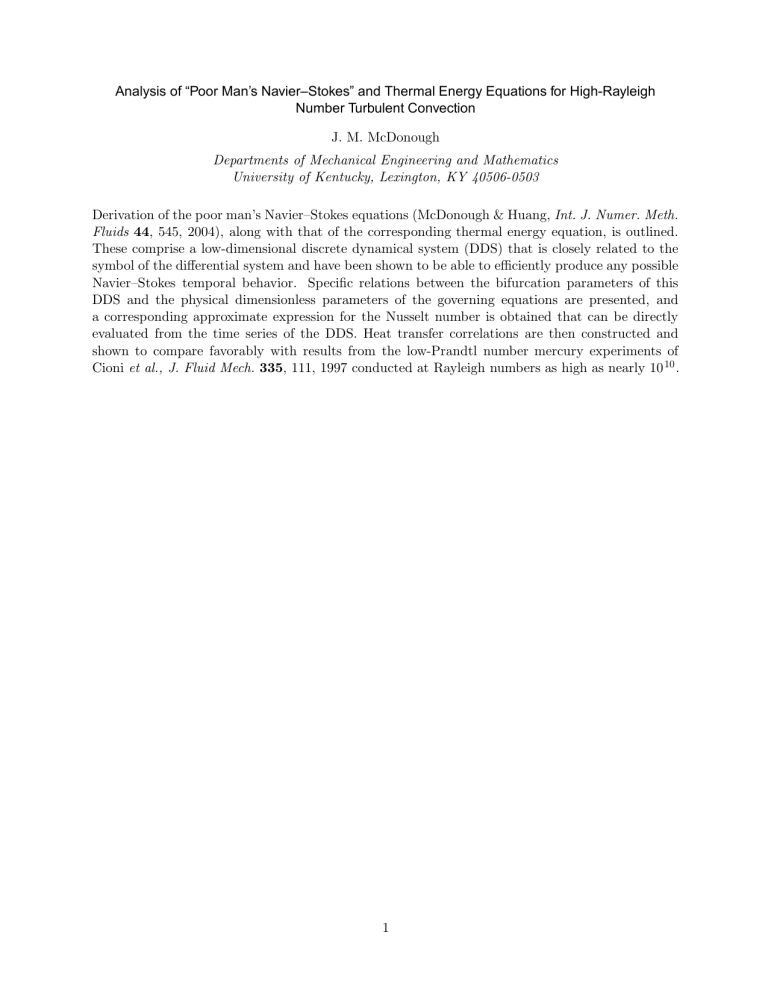
Analysis of “Poor Man’s Navier–Stokes” and Thermal Energy Equations for High-Rayleigh
Number Turbulent Convection
J. M. McDonough
Departments of Mechanical Engineering and Mathematics
University of Kentucky, Lexington, KY 40506-0503
Derivation of the poor man’s Navier–Stokes equations (McDonough & Huang, Int. J. Numer. Meth.
Fluids 44 , 545, 2004), along with that of the corresponding thermal energy equation, is outlined.
These comprise a low-dimensional discrete dynamical system (DDS) that is closely related to the symbol of the differential system and have been shown to be able to efficiently produce any possible
Navier–Stokes temporal behavior. Specific relations between the bifurcation parameters of this
DDS and the physical dimensionless parameters of the governing equations are presented, and a corresponding approximate expression for the Nusselt number is obtained that can be directly evaluated from the time series of the DDS. Heat transfer correlations are then constructed and shown to compare favorably with results from the low-Prandtl number mercury experiments of
Cioni et al., J. Fluid Mech.
335 , 111, 1997 conducted at Rayleigh numbers as high as nearly 10 10 .
1
